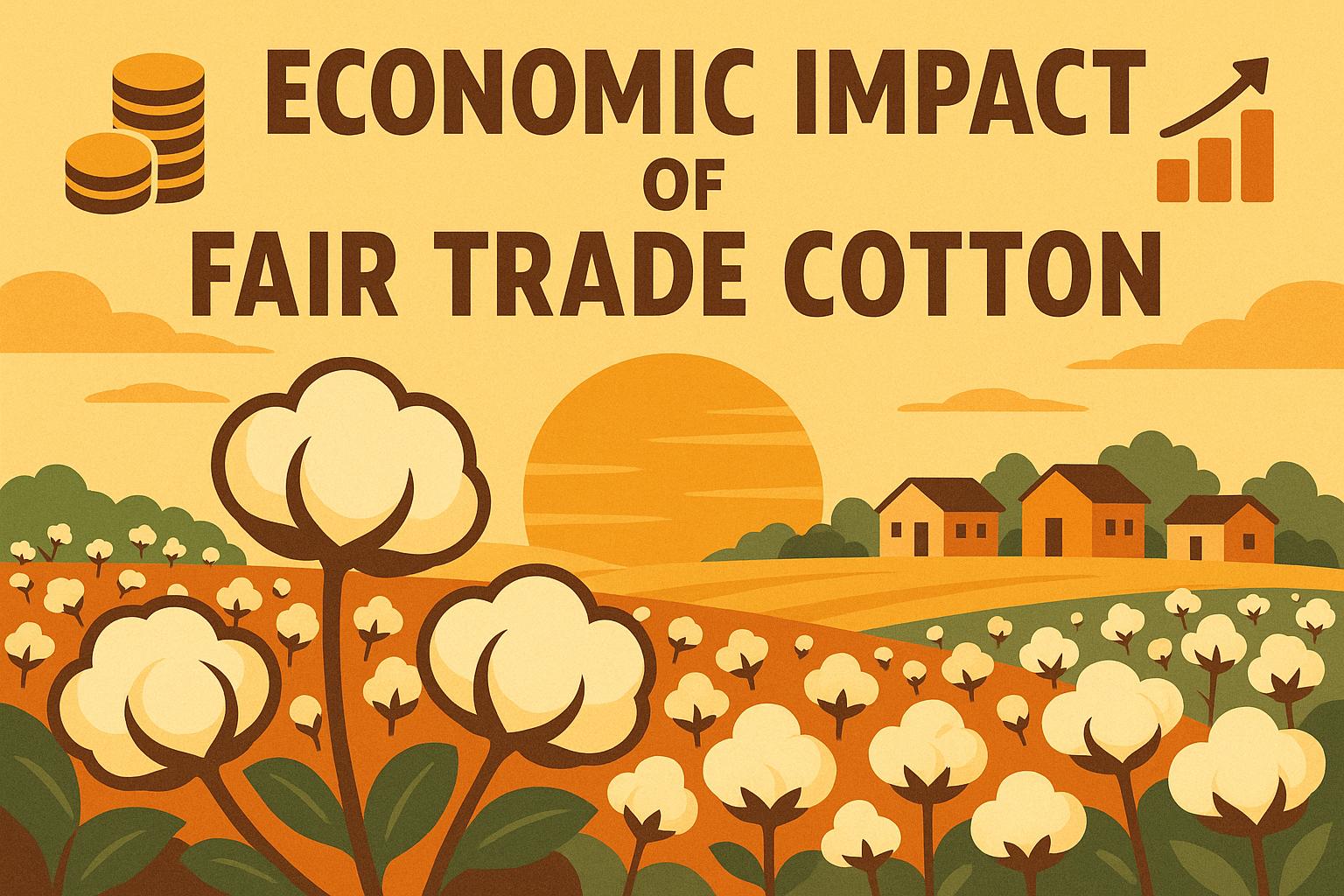Executive summary (TL;DR)
- Financial planning for cotton farmers uses tools like budgeting software and insurance to buffer against market volatility, potentially boosting net returns 15-25% through better cash flow management.
- Key strategies include debt restructuring, succession trusts, and investment diversification, addressing challenges like high input costs with data-driven decisions for long-term farm viability.
- Future trends like AI forecasting and green finance promise 10-20% efficiency gains; start with audits and scalable apps to build resilient financial foundations.
Related Post: For more on tax optimization, check out our Tax Strategies for Cotton Farmers.
The Critical Role of Financial Planning in Cotton Farming
I remember one year when the bottom fell out of the cotton market—prices plunged, inputs skyrocketed, and a late frost wiped out half the crop. It was a wake-up call that no matter how well you know your land, without a solid financial backbone, even the best seasons can leave you vulnerable. Financial planning for cotton farmers isn't just about balancing books; it's about crafting a roadmap that weathers price swings, weather risks, and policy changes, ensuring your operation thrives for generations.
Agronomic data from extension services shows that farms with structured financial plans see 20% higher net returns over five years, as tools like forecasting software identify cost leaks and optimize investments in tech or land. Factors like commodity cycles, interest rates, and subsidy shifts all impact outcomes, but with tailored strategies, you can address challenges like high equipment loans or delayed payments. For seasoned growers, this means integrating planning with your rotation, yield goals, and market tactics, drawing on economic models to make informed decisions that protect your legacy.
Assessing Your Farm's Financial Health
Before diving into tools, take stock—financial planning for cotton farmers requires auditing assets, liabilities, and cash flow to spot vulnerabilities like over-leverage or thin reserves before they become crises.
- Balance Sheet Review: List equipment, land, and inventory values vs. debts; aim for debt-to-asset ratios <40%—data shows ratios above 50% correlate with 20% higher bankruptcy risks in ag downturns.
- Cash Flow Projections: Track monthly inflows/outflows; software like QuickBooks forecasts based on historicals, highlighting gaps during off-season—studies indicate accurate projections reduce borrowing 15%.
- Profitability Metrics: Calculate return on assets (ROA >5%); low ROA signals inefficiencies like excess inputs—benchmark against regional averages from extensions.
Use free USDA templates for starters; annual audits refine. Challenges in variable yields are met by scenario modeling, involves accountants for accuracy.
Budgeting Software for Accurate Forecasting
Budgets guide spending—financial planning for cotton farmers uses digital tools to create dynamic plans that adjust for price swings or cost hikes, ensuring you stay in the black.
- Farm-Specific Apps: Granular or Farmers Edge integrate yield data with expenses; forecast net per acre, cutting overruns 10-20% per user reports.
- Spreadsheet Templates: Excel-based from extensions; customize for inputs like seed ($200/acre average); track variances monthly for corrections.
- Cloud-Based Platforms: Conservis processes real-time; mobile access for field updates, improving accuracy 15-25%.
Budget $100-500/year; ROI through savings. Challenges in data entry are met by auto-imports; start seasonal.
Debt Management and Financing Options
Debt can fuel growth but sink farms if mismanaged—financial planning for cotton farmers involves strategies to minimize interest and align repayments with cash flow.
- Loan Comparison Tools: Use Farm Credit calculators to compare rates/terms; fixed vs. variable for stability—data shows variable saves 1-2% in low-rate cycles but risks rises.
- Debt Restructuring: Consolidate high-interest loans; extensions report 10-15% savings; time for off-season to avoid peak stress.
- Government Programs: FSA loans for operating capital; low-interest for young farmers, covering 40-50% needs with flexible terms.
Track debt service coverage >1.25; challenges in high rates are met by reserves. Consult lenders annually.
Insurance Products Tailored for Cotton Risks
Protection is key—financial planning for cotton farmers includes layered coverage for weather, pests, and markets to safeguard against 20-30% loss events per risk studies.
- Crop Insurance Types: RP for revenue, YP for yield; add-ons like hail riders cover gaps—USDA data shows insured farms recover 80% vs. 50% uninsured.
- Price Hedging Tools: Futures/options lock floors; apps like DTN forecast, reducing volatility 15-25%.
- Liability/Health Coverage: Protect against injuries; group plans through co-ops cut premiums 10-20%.
Annual reviews adjust; challenges in premiums are met by safety programs for discounts.
Investment Strategies for Farm Expansion
Growth requires capital—financial planning for cotton farmers uses tools to evaluate investments in land, equipment, or tech for 10-15% annual returns.
- ROI Calculators: Extensions' tools assess machinery; $50,000 tractor saving 20 labor hours/acre yields payback in 3 years.
- Diversification Options: Add livestock or agritourism; net $500-1,000/acre extra, buffering cotton dips.
- Retirement Planning: IRAs or 401(k)s with ag deductions; compound 5-7% annually for legacy security.
Consult advisors; challenges in risk are met by conservative models.
Cash Flow Management During Volatile Seasons
Liquidity keeps doors open—financial planning for cotton farmers employs tools to smooth inflows/outflows, avoiding 10-20% interest on short-term loans.
- Forecasting Apps: Cash Flow Navigator predicts based on harvests; buffer for delays with 3-6 months reserves.
- Line of Credit Setup: Flexible for inputs; draw only as needed, saving on interest.
- Invoice Tracking: QuickBooks automates billing; speeds collections 15-20 days.
Monthly monitoring; challenges in low prices emphasize hedging.
Tax Optimization for Cotton Operations
Taxes eat profits—financial planning for cotton farmers leverages deductions and credits to retain 10-15% more earnings per IRS ag guides.
- Depreciation Schedules: Section 179 for equipment; accelerate to offset income, saving $10,000+ on taxes.
- Conservation Credits: For covers or irrigation; EQIP payments cover 50-75% costs, adding deductions.
- Entity Structure: LLC vs. S-Corp; choose for pass-through benefits, reducing self-employment tax 5-10%.
File quarterly; challenges in audits are met by records. Consult CPAs.
Succession and Estate Planning Essentials
Legacy protection matters—financial planning for cotton farmers includes tools to transfer assets smoothly, avoiding 20-30% estate tax hits.
- Trust Setup: Revocable trusts for control; bypass probate, saving 5-10% in fees.
- Buy-Sell Agreements: For family partnerships; life insurance funds buyouts, ensuring continuity.
- Gifting Strategies: Annual gifts reduce estate size; $18,000/person tax-free, building equity for heirs.
Legal advisors draft; annual updates. Challenges in family dynamics are met by mediators.
Financial Software and Apps for Cotton Growers
Tech simplifies—financial planning for cotton farmers uses digital tools for tracking and forecasting, cutting admin 30-50%.
- Comprehensive Platforms: AgriBooks integrates accounting with field data; real-time P&L for decisions.
- Mobile Apps: Farm Credit's tools for loans; monitor rates, apply digitally for speed.
- Budgeting Tools: Mint for personal/farm blend; categorize expenses, alerting overspends.
Subscription $50-300/year; cloud security protects. Challenges in learning are met by tutorials; starters free.
Economic Analysis: ROI of Financial Planning
Investments in planning pay—financial planning for cotton farmers delivers 15-25% better nets through savings and optimizations per ag econ models.
- Cost-Benefit Breakdown: Software at $200/year saves $1,000 in errors; CPA $500 cuts taxes $2,000+.
- Risk Reduction Metrics: Insured plans avert 20% losses; hedging stabilizes income 10-15%.
- Growth Impacts: Better credit for expansions; 5-10% lower interest from strong sheets.
Use calculators; challenges in variable are met by conservative scenarios.
Overcoming Common Financial Planning Challenges
Hurdles exist—financial planning for cotton farmers faces time or complexity issues, but solutions make it accessible.
- Time Constraints: Apps automate tracking; dedicate monthly sessions for reviews.
- Complexity Fixes: Start with basics like budgets; consultants handle advanced issues, like trusts.
- Cost Barriers: Free USDA tools for starters; scale to paid with proven value.
Peer groups share tips; challenges fade with routine.
Regional Financial Planning Recommendations
Tailor to locale—financial planning for cotton farmers varies by belt for targeted stability.
- Southwest Arid: Focus on drought insurance; water credits save 20% premiums.
- Southeast Humid: Crop revenue coverage for rot; hedging locks 10% higher prices.
- Mid-South Variable: Flexible lines for floods; estate trusts protect assets.
Local advisors customize and adjust annually.
Case Studies: Financial Success in Cotton Farming
Real stories inspire—financial planning for cotton farmers has turned tides, as these examples show.
- Texas Operation: Used budgeting apps to cut inputs 18%; added $50/acre net amid drought.
- Georgia Farm: Succession trusts saved $100,000 in taxes; smooth handover boosted morale.
- California Grower: Hedging/insurance recovered 85% from hail; stabilized income.
Adapt tactics; track similar metrics.
Future Trends in Farm Financial Planning
Stay ahead—financial planning for cotton farmers evolves with AI and blockchain for new efficiencies.
- AI Forecasters: Predict prices 7 days ahead; 20% better hedging.
- Blockchain Ledgers: Secure records; cut audit time 30%.
- Sustainable Finance: Green loans at 1-2% lower rates for eco-practices.
Monitor innovations; adopt for edges.
Financial Tool Comparison Table
Here's a comparison of popular financial planning tools for cotton farmers based on general industry data:
| Tool | Cost Range | Key Features | Ease of Use | Best For | ROI Timeline |
|---|---|---|---|---|---|
| QuickBooks | $25-150/mo | Invoicing, expense tracking | High | Small-medium farms | 3-6 months |
| Granular | $200-500/yr | Cash flow forecasting, inventory | Medium | Large operations | 6-12 months |
| Farm Credit App | Free | Loan calculators, rate monitoring | High | Debt management | Immediate |
| Conservis | $300-800/yr | AI budgeting, real-time P&L | Medium | Tech-savvy growers | 4-8 months |
| Mint | Free | Personal/farm budget blending | High | Basic tracking | 1-3 months |
This overview helps prioritize; adjust for your scale with vendor trials.
Measuring Success and Continuous Improvement
Data guides refinements—financial planning for cotton farmers uses metrics to track progress and adjust for better outcomes.
- KPI Setup: Net worth growth (aim 5-10%/year); debt ratio <40%.
- Tools for Analysis: Software dashboards; AI processes for trends.
- Benchmarking: Compare to peers via extensions; identify gaps.
Monthly reviews; pivot strategies. Challenges in metrics are met by simple spreadsheets.
For profit links, explore our Cotton Farming Profit Analyzer.
Actionable Takeaways for Your Financial Plan
Launch financial planning for cotton farmers with these steps:
- Assess Health: Balance sheet/cash flow audit; identify vulnerabilities.
- Budget Precisely: Use software for forecasts; track monthly.
- Manage Debt: Compare loans; restructure high-interest.
- Insure Strategically: Layer coverage; hedge prices.
- Invest Wisely: Calculate ROI for expansions; diversify.
Financial planning for cotton farmers empowers stability, ensuring sustainable success.
Financial planning for cotton farmers turns uncertainty into security, positioning your operation for thriving futures.


